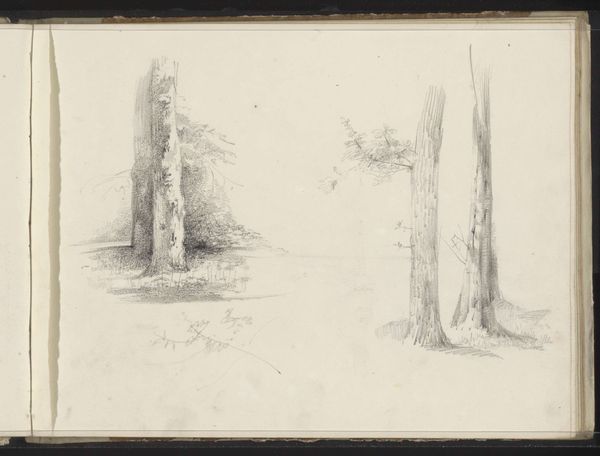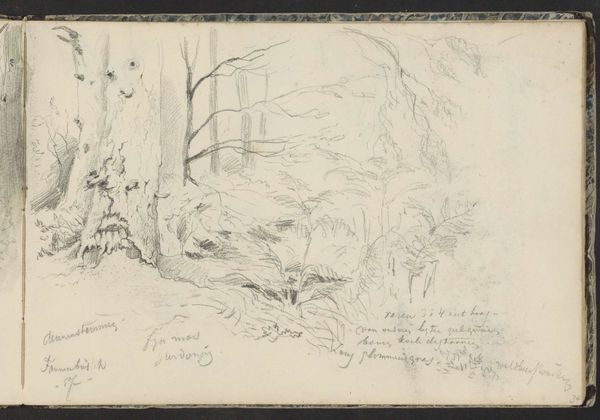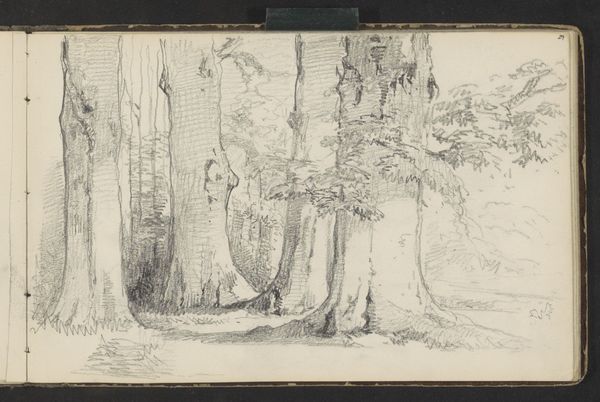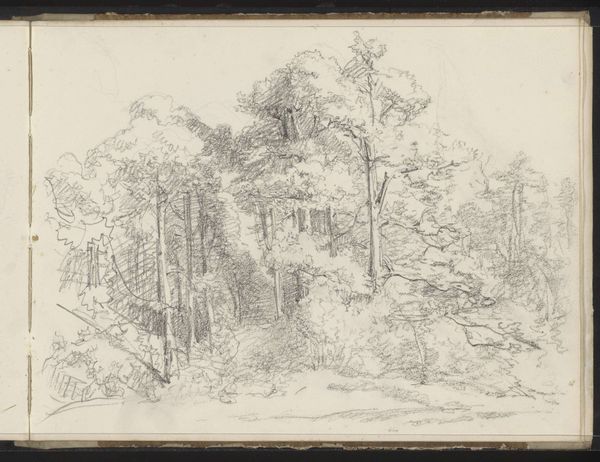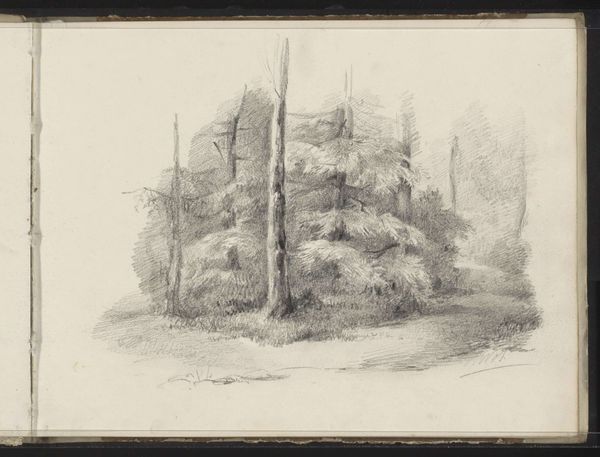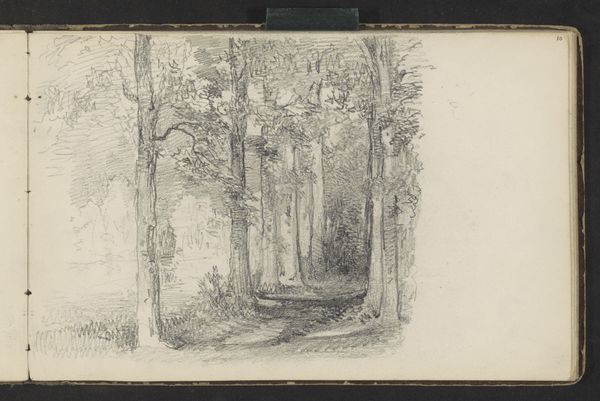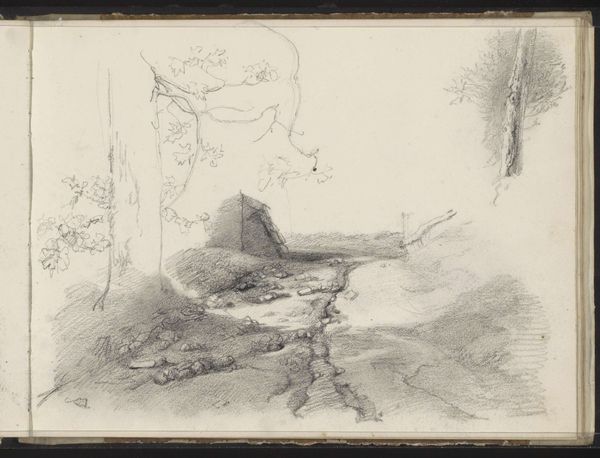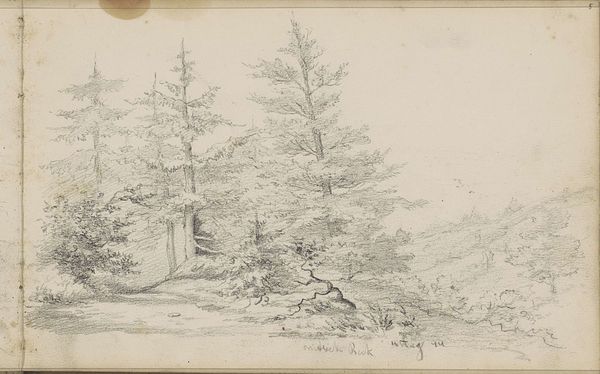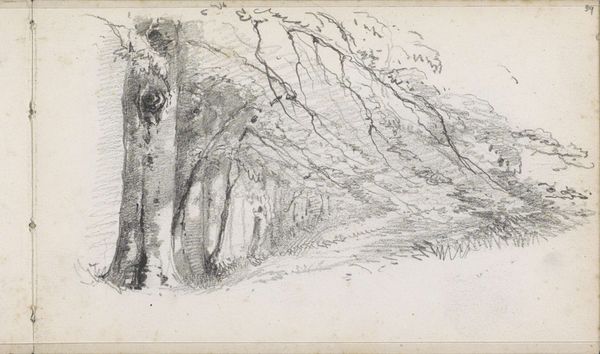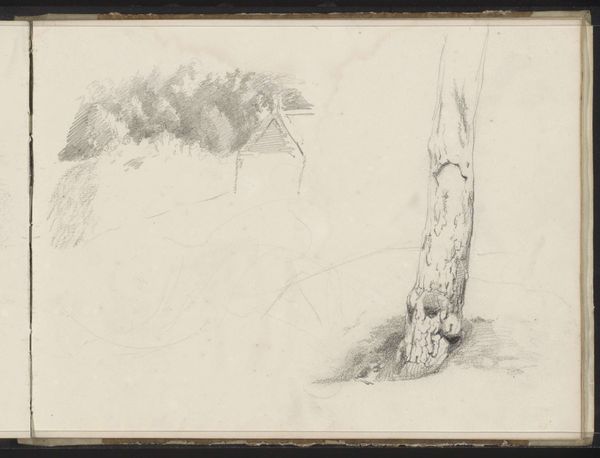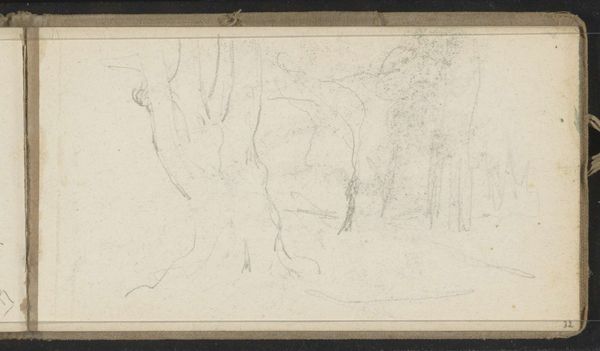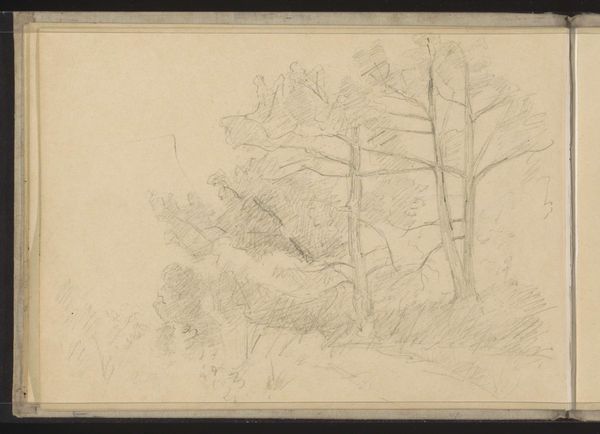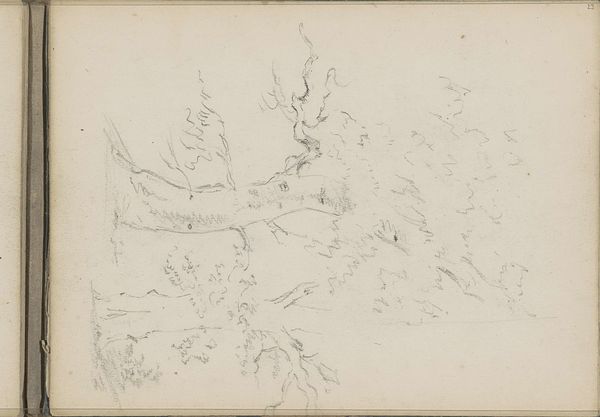
drawing, pencil
#
drawing
#
landscape
#
pencil
#
realism
Copyright: Rijks Museum: Open Domain
Editor: Here we have Johannes Tavenraat's 1857 pencil drawing, "Gocher Heide en Sparren in het Tannenbusch," currently held at the Rijksmuseum. The detail achieved with pencil is pretty impressive; it has such a delicate, almost dreamlike quality. How do you interpret this work? Curator: From a formalist perspective, the most compelling aspect of this drawing is its masterful use of line and shading. Notice how Tavenraat uses the varying pressure of the pencil to create depth and texture. The structural composition directs the viewer's gaze from left to right, leading us into the forest space. Editor: It's fascinating how just a pencil can create that illusion of depth. Does the looseness of the style indicate that it's a study for a larger painting? Curator: The apparent sketch-like quality belies the drawing's sophisticated structure. Look at the articulation of space between the tree trunks, how each is uniquely rendered, implying solidity while remaining unconstrained within precise lines. It stands alone perfectly. Editor: I see what you mean. I was too focused on what I thought it *should* be, rather than appreciating what it *is*. Thanks for pointing that out! Curator: The interplay between light and shadow certainly underscores this quality. Through detailed observation of its structural elements, we can glean an appreciation for the intrinsic artistic qualities of Tavenraat's composition and technique. Editor: It's interesting to focus purely on the image, and forget any story behind its creation. Curator: Indeed. A satisfying study in itself.
Comments
No comments
Be the first to comment and join the conversation on the ultimate creative platform.
